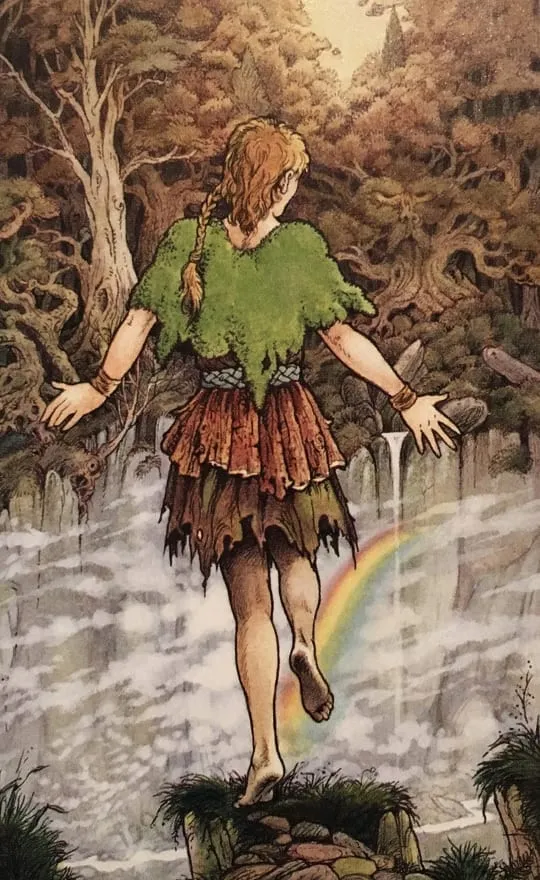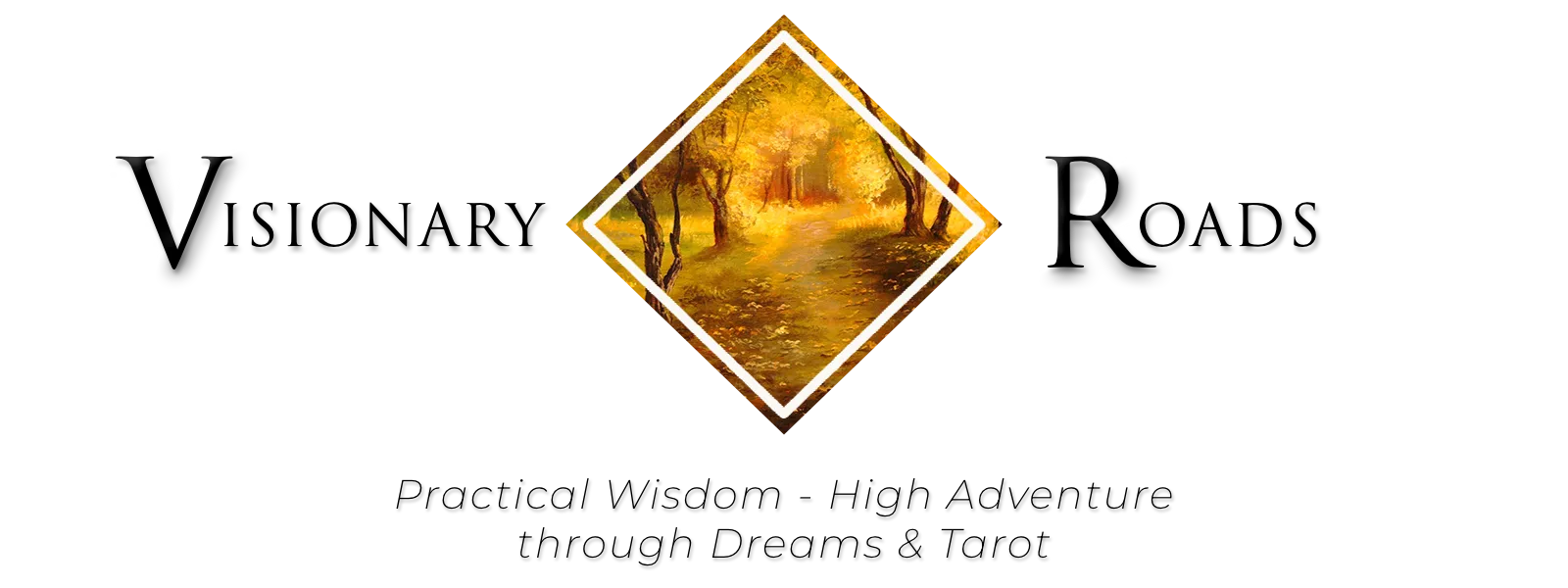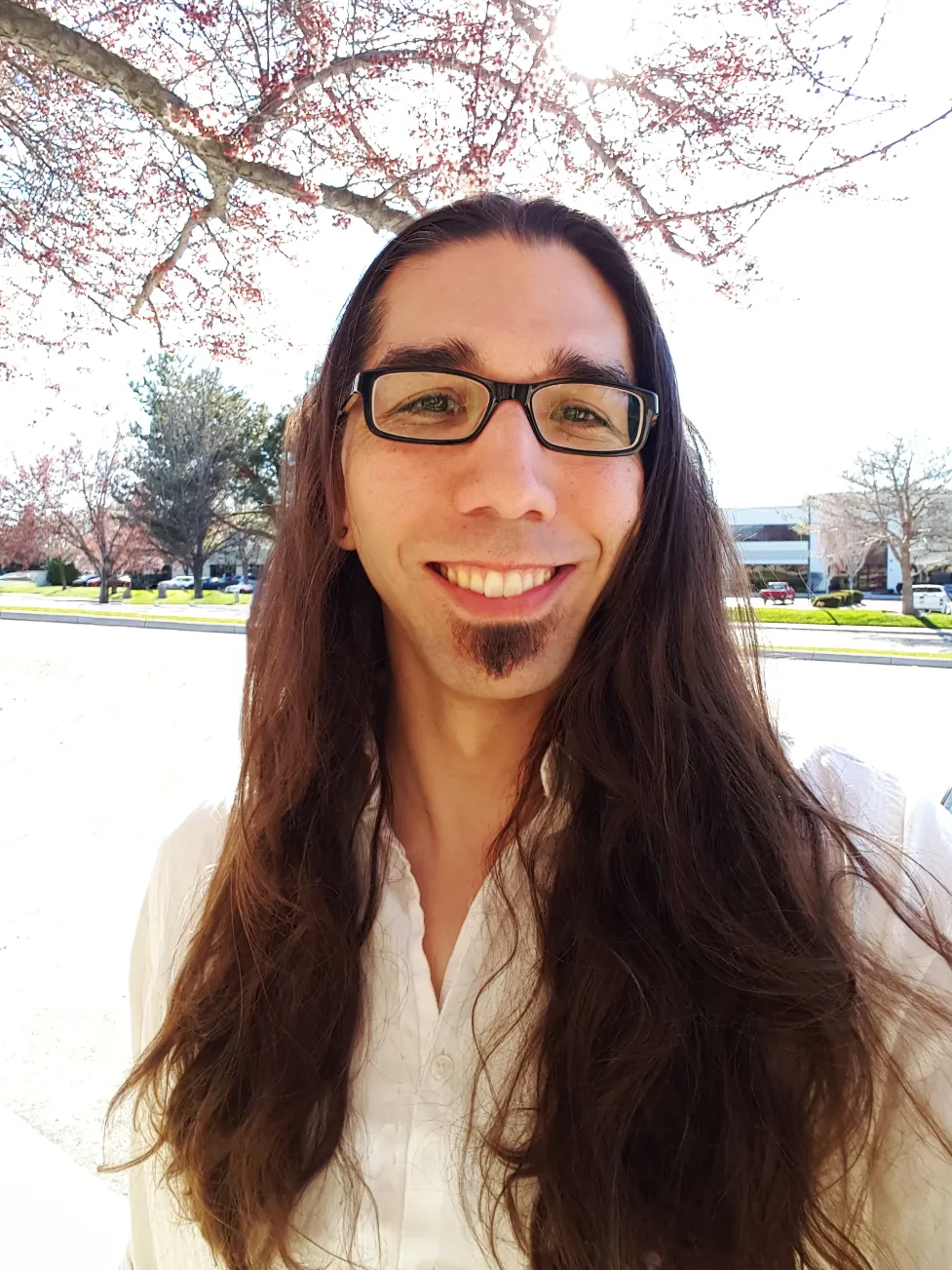Iris: An Allegory

This is a portion of an unpublished body of work written between 2008 - 2010 tentatively titled Patterns and Paradox.
The allegory that introduces this piece was the visionary trigger for Iris to come through—that is, as I recorded my experience through writing, it opened a road to allow me to visit these ideas and for them to visit me. The piece itself is a revisiting of the initial allegory and a description of the landmark concepts of the journey I took along that road. I found that these concepts seemed to reflect or describe my experience of my own experiential filters, an eye attempting to gaze itself and describing the ways in which I could make out the features of what it was. Questioning identity—as well as questioning the question—lead to a very interesting result. The perspective introduced allowed me to enter into a different relationship with myself, with others, and the world, and yet it was no different than before as it had intrinsically always been my perspective. It was the same, yet different. For those that read this, it’s a shift in perspective that I hope seems both novel and familiar, and there is a self-referential reason for that which can be teased out from the writing itself. In some ways, this is a more prose version of the Glossary for Patterns and Paradox.
I have lightly edited the original writing for grammar and clarity; the vast majority of the writing remains intact. The piece is unfinished and concludes somewhat abruptly.
After a long and fascinating journey, I have arrived at a great chasm where my all my carefully constructed values poise at the edge of the unknown. Do I turn back for the safety of the fields of flowers I traversed? I reason that there is much more to be explored along some very alluring paths from whence I came—paths that whisper the promise of security, of sanity among the myriad denizens of the world who do not recognize their origin in divine madness. Do I step into the abyss, apparently my destination and destiny after all this time?
I sit and dangle my intellect, my intuition, my perceptions, my love, my passions above the chasm hoping to draw something out, to lure life out of lifelessness. Nothing comes. I offer my hopes, my fears, my voice, my instincts … and still nothing. I reach out my hand and attempt to feel emptiness and forget what it is I am doing. My hand leads, my foot follows. I turn sideways and balance my body between form and formlessness.
My foot touches something, then my hand. I see something. There is a bridge of endless colors, a bridge of light, a rainbow bridge before and behind me. I turn and take a step back onto solid ground. I no longer see the bridge. I dangle my foot over the edge—the bridge is not there. I turn again to balance on the edge; the bridge appears. Cautiously I tap it a few times with my foot. It isn’t solid, but it isn’t un-solid—it is both and neither.
My journey has taken me across many strange environments and the only consistency I have found is to trust exactly what appears to me—what appears not only to my eyes, but to my sense of life. As absurd as it may seem, the most reasonable thing to do is to not second-guess this bridge, but to accept it and whatever consequences such a decision brings. I continue to walk along the bridge and realize that while I am moving forward, one foot always seems to stay on the ground from whence I came.
§§§
A Visionary Perspective
Iris is the rainbow, a Greek goddess who serves as a messenger for the other gods. One must be in just the right relationship to see her, just as one must have the light of the sun to one’s back in order to see a rainbow in the sky. Iris is the symbol I use for both perceiving and walking a bridge that lies halfway in our comfortable earth-bound experience, and halfway in the unknown. Notice that the traveler in the allegory found this path not by looking forward or going forward, not by looking back or going back, but by turning sideways. They did not just look sideways, but turned their body completely sideways to be symmetrically balanced between the known and unknown. This method of turning sideways is both poetic and practical, for it provides a new perspective that cannot be seen or used any other way. It has something to do with both the known and the unknown, but is neither. It can also be either. In fact, it is a position that allows one to be either, neither, both, and something else all at once.
Many have walked this bridge before and given it many names. Some identify it more with the earth, some more with the unknown, some even call it a rainbow bridge. They all seem to be correct, and none of them do, from the vantage of the bridge. Once on the bridge, true and false have the same yet different meanings—true is one’s foot on solid ground, that which one accepts; false is one’s foot in the unknown, that which one lets fade into unconsciousness. Both exist, and one always has one’s foot in both. One feels both this which one includes and that which one excludes.
Iris: A new path that is as ancient as the earth; neither forward-looking, nor backward-looking, nor lateral-looking, but laterally-traveling; a position that is nowhere, everywhere, and right here.
Let’s begin with the most simple, the most complex, and the central principle that is explored throughout this study, something I’ve called the “essential paradox”. It is the “sideways” position of the traveler that allows access to certain ways of interacting with reality. It is apparently a paradox when analyzed through conventional logic, yet it encompasses conventional logic and more. I call it “essential” for I have yet to find anything that it doesn’t relate to; in essence, it is a way to describe relationship itself. It has no single form, and yet any form will make it complete. It may be called the “essential allegory” for the symbolic terms are interchangeable and have multiple layers of meanings.
The one is many, the many are one. Sameness and difference are the same yet different. The unnamable lies beyond.
The essential paradox can be viewed from three principles: an empty concept with nothing except a word, object, or symbol pointing at something beyond itself that has no word, object, or symbol; a singular principle of oneness and continuity; and a plural principle of manyness and separateness. The latter two principles form a dyadic pair that imply each other.
The empty concept is anything—anything you can think, say, perceive. It is the acknowledgment that reality is referential, that anything—any thing—has no content or description without referring to something else. Without something to describe it, anything is beyond description. The empty concept may be viewed as transcendental. It is tao, mahamudra, and a host of other names that have no name. It is creativity—that which always goes beyond itself. This unnamable concept can only be described through the dyadic principles that follow; the dyad is the nature of relationship itself.
The singular concept is this, self, one. It is the self-recognition or self-reflection of creativity. It is sameness, the basis of existence. Whenever anything comes into being, this is being. It is the great chasm of existence, the Chaos of Hesiod1, indistinguishable from the empty concept except for its quality of existence. Oneness has a quality of openness and open-endedness; it is vast, all-inclusive, and without boundary.
With the singular concept comes the plural concept. Many are the mulititude of existence. It is the concept of difference and plurality, of other. It is the solid ground which your foot can touch, the distinction and relationship created by foot and earth. It is the principle of contrast of one and one with emptiness between. Many presupposes one, and is one. One presupposes many and is the same as many, yet different than many.
Here are more formulations of one and many, sameness and difference. This list is not exhaustive and points to a metastructure apart from the content of particulars. Each can be viewed as the other or distinct from the other, or as emptiness itself. This is Iris: A Perspective.
| Sameness | Difference |
| Radiance | Coherence |
| One | Many |
| Tone | Note |
| Continuity | Discreteness |
| Open | Closed |
| This | That |
| Self | Other |
| Unconsciousness | Consciousness |
| Subject | Object |
| Rarefaction | Condensation |
| Wave | Particle |
| Fluid | Fixed |
| Spirit | Soul |
| False | True |
Is this dualistic? Monistic? Pluralistic? Something else? Yes and no—take your point of reference, relate the one and many. The table is a symbol—the structure of Iris is what allows the table entries.
In keeping with visual allegory and language, I refer to Iris as a “visionary” perspective. This draws in the connotation of “visionary” as something this is at the edge of understanding, leading the way into unknown territory. Vision is the most “far-reaching” of our senses; a parallel is drawn by encompassing the mystical while retaining a sense of this world, near and far2. The basic “thing” or “being” of Iris is thus termed “vision” (the encompassing view from inside, one with vision), or differentiated as “a (or the) vision” (the distinct view from the outside).
The relationship between visions is a description of feeling. A vision simultaneously has a dyad of inward-flowing toward oneness and an outward-flowing toward manyness; it is both moving toward undifferentiated radiance and differentiated coherence. Feeling is the drawing in the manyness of other visions into oneself, the many toward one, or the expression of the vision’s manyness toward the oneness of another. One feels the coherent truth of another and draws it toward oneness; one expresses one’s truth toward the oneness of others. From one to one lies infinity3.
Power is the assertion of outward-flowing vision in an attempt to draw another vision into it. Conflict arises as two or more visions attempt to exert power over one another. The resolution of conflict arises as one vision accords to the other.
A nexus of shared coherent visions creates the relationship of a common world, an outward-flowing complex vision. The best example of a common world is our own “physical” world of earth, sea, and sky, of bodies and light, of sensation and emotion. Here, everything in our world participates to maintain that complex coherent vision. That complex exists as the intense interaction of visions flowing from the interior of each outward, with those that manage to exert power or co-creative skill making an appearance in the common world. Those visions that do not resemble the visions of others closely enough continue to flow outward, but to not attract the co-creative participation of other visions. A human may really want to fly in our common physical world, but a simple vision of his body flying will not likely amount to that vision cohering in the common world. That same human then must find a way to exert power over the visions of the common world or co-create with them in order to fly; that may be to buy a ticket on an airplane, build a hang glider, or find some other means to participate with the coherent vision of the world. Now this does not preclude that same human from flying in another common world, such as a shared imaginative realm or in an “astral realm”. Value fulfillment will drive one to find some way to fulfill one’s vision in some common world, creatively moving inward and outward until it is satisfied.
The “boundary” or meeting place of interpenetration of “inside” and “outside” of a vision is generally a common world in which the vision participates. For a human in our common world, this boundary is generally an identification with the body. The shifting of identity toward oneness then feels like “going inward”, somehow “inside” the body, while the shifting of identity toward manyness feels like “going outward”, out into the (or a) common world.
Value fulfillment may simply be defined as “that which provides value is accepted as true” (much like pragmatism). According to this framework, true is what is brought inward or expressed outward as coherent experience; false is that which is left as an undifferentiated radiance, a vague background.
Truth is an empty concept. True is coherence. False is radiance. This resolves the odd paradox of treating something “false” as non-existent. True brings oneself and one’s perception into focus, allowing for an intensity of experience in what one accepts as “true”. False dissolves one and one’s perception into sameness, thus not providing any distinction on which to focus.
[image credit: Will Worthington, Wildwood Tarot (The Wanderer)] An interesting aside, I discovered this image from the Wildwood Tarot years after writing the initial allegory. It matched my vision so closely that I was shocked. The Wildwood Tarot has since become one of my primary tarot decks.
Notes
1 See Theogeny. Chaos is the first “god” that comes to be in Hesiod’s generation of divinities. Some scholars draw parallels between Chaos and other Near East creation stories where the “gap” or space between an undifferentiated heaven and earth is the first act of creation.
2 As a culture, we are oriented toward vision more than any other sense, emphasizing light over other ways of experiencing. This gives a large pool of cultural metaphor for expressing this perspective and therefore minimizes the coining of new words, a common and awkward obstacle to learning something new.
3 The creative multitude lies between and within any one, a discrete infinity. Zeno points this out in his famous paradoxes, which may be his recognition of the paradoxical dyadic principle.

